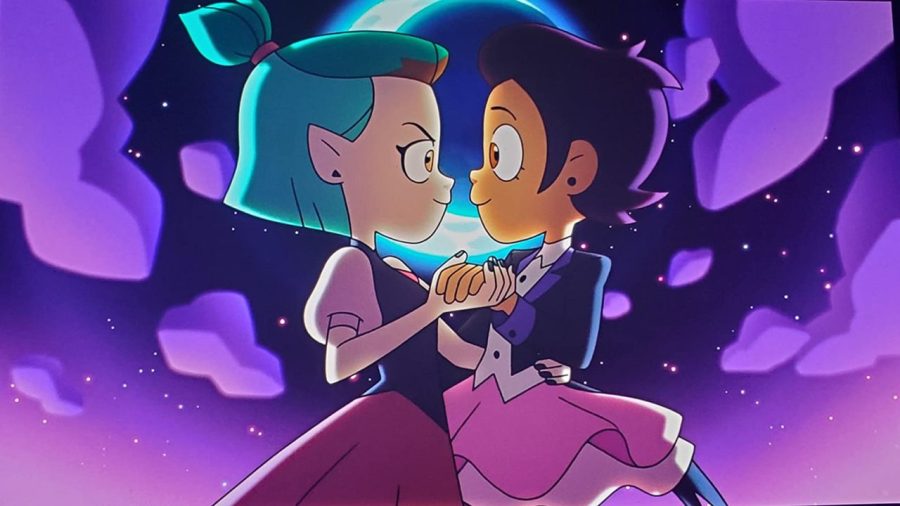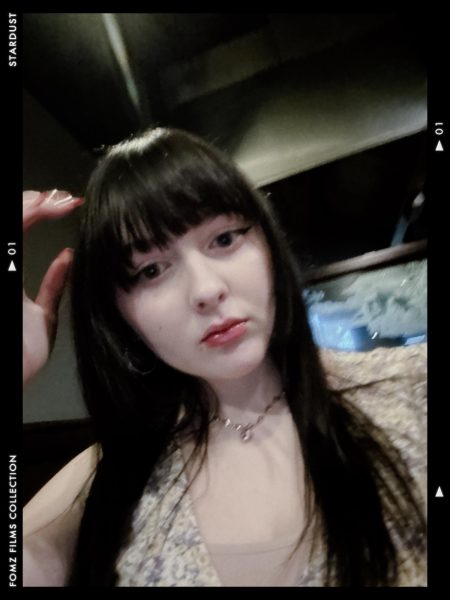LGBTQ+ youth need more representation in media
Luz and Amity from the disney show The Owl House.
March 9, 2023
The 2022 Trevor Project national survey found that 45% of LGBTQ+ youth seriously considered attempting suicide, nearly half were transgender or non-binary. So to reduce that number to 0 why don’t we improve upon queer representation and spread it as a norm in media? As of 2019-2020 television shows, GlAAD only found 10.2% out of 879 characters identified themselves as gay, lesbian, bisexual, transgender, or queer. Even though this number is low, a higher percentage of LGBTQ+ characters have been seen. Throughout the past 10 years, we’ve seen a rise in LGBTQ+ representation in youth shows like “The Owl House” and “Heartstoppers”, which both feature queer characters. These shows embrace and normalize queer youth and their struggles and lives, helping people feel more included and normal. The show “The Owl House” is an animated fantasy adventure series that follows a young Dominican American girl named Luz as she navigates the demon realm known as the Boiling Isles, home of demon sand witches. Luz (voiced by Sarah-Nicole Robles) as the protagonist is bisexual, the show also features the confirmed non-binary (they/them) character Raine Whispers (voiced by Avi Roque who is a nonbinary(they/them), Latin, trans voice actor & voice artist). While many more characters fall under the LGBTQ+ spectrum, these two are more notable as there are some of Disney’s first confirmed main characters that are LGBTQ+. Not only are these characters allies of their approved queerness, it is changing where we see pride and representation. Another popular show is Netflix’s “Heartstoppers”, even though Netflix isn’t the best source for queer representation as they have fired queer employees in the past few years, despite this Netflix has an array of queer tv shows and movies for most ages.“Heartstoppers” is based on the Alice Oseman series of YA graphic novels that follow two boys, Nick( played by Kit Conner) and Charlie (Joe Locke). Charlie is openly gay and comfortable with himself while Nick navigates his emotions about Charlie as the school’s star rugby player and a closeted queer character. The show discusses the queer awakening that comes at different points in LGBTQ+ people’s lives. The show features blossoming romance and expresses youth lives. Though both of these shows bring an important piece of representation, conversely many feel that parts of the LGBTQ+ population haven’t been properly represented and still need to push for their respiration. But we must understand media in some way or another affects reality, so the use of media as a way of spreading representation in media can and will affect how youth minds grow and develop most importantly in society and schools. School and education are critical points in a young person’s life as they develop their feelings towards ideas, people, and cultures as they are also developing emotionally and physically. Even though schools are made to be safe places for students, very few students have reported feeling safe as well. 27% of students can feel safe being themselves at school, and lastly, 70% of students reported being bullied for their sexual orientation. Media is a critical area where more representation is needed to support and grow the safety and emotional well-being of LGBTQ+ youth.


